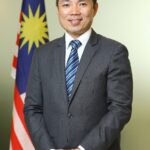<Above> Video of EITN Healthtech Roundtable that highlights the main messages brought forth at the event.
On the 3rd of May 2019, Enterprise IT News (EITN) organised a Healthtech round table that aimed to discuss how Technology can Enable Better Access to Healthcare.
It seemed a fitting follow-up to the Ministry of Health’s (MOH) industry event the day before which wanted to invite ideas on how to deliver better health services.
Moderator for the (EITN) event, Mohan Manthiry, who is also founder and CEO of InfoMed https://www.infomedonline.com/ kicked things off with a WEF acknowledgement that Industry4.0 and accompanying technology/digital tools can be leveraged to improve the quality of life.
“It is necessary and timely,” he pointed out.
Even long-established medical journals have created digital versions of themselves. This somewhat speaks to the importance of digital to the healthcare industry, in this case to help distribute medical literature to the healthcare fraternity.
But, when exactly did Malaysia’s digital healthcare journey begin?
This was just one of many questions, our four panelists from MOH, Sancy Berhad, Hospital USM and TM One, answered during the roundtable.
For shorter key takeaways of this session, click here.
MINISTRY OF HEALTH – Dr. Fazilah Allaudin, Deputy Director of e-Health Planning Unit
When did Malaysia’s digital healthcare journey begin?
Dr. Fazilah and Mohan reminisced as far back as 1997, the year after the Multimedia Super Corridor (MSC) had been announced by then Prime Minister, Mahathir Mohamad.
Director General of Health at the MOH at the time was Tan Sri Abu Bakar Bin Suleiman, to whom the beginning of digitalisation in Malaysia’s healthcare is popularly attributed to.
He was heavily involved in the telemedicine blueprint, and even had a visionary 2020 mission of one-time Lifetime Health Record (LHR) which is focused on the population.
LHR establishes, maintains and manages only one health record for each patient, and this record focuses on interoperability so that healthcare givers can easily access records of the patient that engages them.
Just the year before, Hospital Selayang had been established as the first paperless and film-less hospital in Malaysia and Southeast Asia, and the local healthcare ecosystem looked well on its way to implementing LHR nationwide.
But the timing was not right.
Dr. Fazilah pointed out, “The journey wasn’t smooth. The technology and the people were not ready.”
But the MOH persisted at digitalising the industry even though one year recently, IT budgets for healthcare was zilch.
By 2016, with the 11th Malaysia Plan, the emphasis on digital started to become prominent and ICT was once again an emphasis for the Health Ministry.
She observed, the local healthcare industry is a buzz of activity again, and there is renewed vigour with a new government to consolidate everything that has been done up till now.
With a newly formed Health Advisory Council that sees Tan Sri Abu Bakar as the chairman, Dr Fazilah even quips, “Tan Sri Abu Bakar and Tun Mahathir are back at last again (after nearly 25 years). And this time with 5G speed.”
Having spent a big part of her career implementing ICT for the local industry, she said, “We have come a long way since Hospital Selayang in 1996, and e-Health is a passion of mine.”
True to form, she is the Secretariat for the healthcare chapter for the upcoming 12th Malaysia Plan (2021-2025), and she is well aware of the uphill task.
“Electronic Medical Records (EMR) for the nation is a done deal. It has to be done. But, we are still playing catch up (to the other countries in the region).”
So, what is the future moving forward?
She pointed out Malaysians in rural areas without access to healthcare, like you and I do. Doctors and nurses are still overworked and often times bogged down by ancient operational processes and administrative work.
These processes and administrative work which are supposed to enable, tie them up instead and hold them back from their core function – providing treatment with care.
Technology is meant to be the answer, and Dr. Fazilah had acknowledged the defocus on care and treatment, because of emphasis on operations.
She posed an idea that has been well-debated before: Maybe we should shift our focus, and let those who are good at it, do it. We buy it as a service. And we just focus on wellness.
SANCY GROUP – Raj Ganesarajah, CEO and co-founder
Here’s a fact Raj has observed over the years he has spent in the IT industry. “Private sector investment in technology is primarily limited by budgets.
“In terms of operational systems like Hospital Information Systems (HIS), they tend to spend the least possible, unless it is a billing system. So, operational transformation is limited,” he stated.
Another problem Raj observed was the lack of any meaningful organisation that helps the healthcare industry understand technologies out there to the point that the industry can plan its strategic direction.
“Other industries have MDEC, and industry-based groupings, associations and so on. But not the healthcare industry.
“I segue to the government; I think MOH can help a lot in terms of what type of innovation, the healthcare industry should be looking at.”
Raj also opined that the industry has spent a significant amount on technology, but their investments are not optimised.
“This is prevalent (issue). You will notice increase in positive outcomes after spending. Then the law of diminishing returns happen, and level of tech usage moves from 80-percent to 10-percent.
“Buying technology and implementing it, shouldn’t be a one-time event. The investment you make into this, is a continuous decision that you make day by day,” Raj said.
Sancy Berhad employs 200 headcount to be able to do what they do; besides being the first and largest IT BPO company for healthcare in the region, Sancy Berhad also develops software solutions for the industry.
The solutions they develop want to address critical problem areas, one of them being waiting times. “It’s usually 90 minutes, to see a doctor, another 90 minutes to get a scan, and another 90 to do a blood test, another 90 to get results.
And then it takes 10 minutes to pay the bill,” Raj said, adding that that it’s ok if one visits the doctor once every 10 years.
The point he makes is that the emphasis of healthcare service delivery today, is on everything else but convenient outcomes and positive experiences for patients.
HOSPITAL UNIVERSITI SAINS MALAYSIA, KUBANG KRIAN – Dr. Ariffin Mokhtar, Medical Lecturer/Consultant Anesthesiologist
Hospital Universiti Sains Malaysia (HUSM) as a teaching hospital is also in collaboration with the MOH to put up digital health delivery for the B40 segment. This involves executing pilots in the form of a sandbox and a tech showcase.
Dr. Ariffin said, “Now, not many understand the role of a university hospital. It’s a bit unique with more activities, and our five main ones are education, research & innovation and medical services. This is at the front end.”
There is also information management and resource management, that are part of USM hospital’s activities, at the back end.
Many people tend to forget that university hospitals are teaching hospitals, and as such they are under the jurisdiction of the Ministry of Education
“The education industry exists in a unique ecosystem, as we produce products (doctors) for the healthcare industry. If they do not meet requirements, they have to be re-trained because sometimes syllabus, methods or facilities are outdated.”
To add salt to injury, technology is evolving in a way that is difficult to predict. “Gartner says more than 50-percent of jobs today, won’t be around in 10 years.
“So, the way doctors practice in 10 years will be totally different from the way I practiced when I started in 1994. In fact, how I practice now is so different to then,” said Dr. Ariffin.
But the key thing is this: How do our university hospitals prepare their end products, or ‘doctors’ who have to go out into a digital-first world and provide health services?
This could be the reason why, healthcare tends to be left behind when it comes to digital transformation.
Dr. Ariffin reminded the roundtable panelists and audience, “The focus of the medical staff is NOT technology. The way I see it, it is a multi-disciplinary team.
“And doctors have to work in multi-disciplinary teams, and bridge the gaps that exist.”
A methodology like enterprise architecture (EA) for example, provides a valuable and useful way to view the hospital as a business organisation, identify the current state, the target state, and the steps needed to bridge gap between current and target states.
“EA is good foundation to build upon, and we are focused on competency building of future healthcare providers,” Dr. Ariffin shared.
Being 100-percent medical practitioner, he also has one leg firmly planted in the world of IT as a certified business architect.
This experience sees him taking on the role of building competencies for technology and the hospital. In 2018 alone, he has conducted 62 workshops for the 3000 strong hospital staff, of which 1600 are nurses.
TM ONE – Hanis Hanisab, Healthcare industry expert
TM One’s industry expert, Hanis Hanisab painted a bleak picture about the future health of Malaysian individuals. He observed millennial and the Z generation, being very crucial stakeholders for healthcare providers in the future.
And with the medical inflation rate in 2017, being higher than the average in all of Asia, what is the implication of all this going to be?
“People are looking for cheaper options as they are not willing to spend more than what they have allocated for health.”
This is resulting in admissions and referrals to public healthcare facilities, increasing.
“To optimise operational efficiencies and enhance health promotion activities, it is timely to aggressively pursue digitalisation and digitisation of healthcare,” said Hanis.
Addressing the issues
After having laid out the landscape that she has to work with and within, Dr. Fazilah shared that key areas moving forward will be primary care, healthcare financing reform and public-private integrations.
MOH is already looking at these three areas, and there are many initiatives already put into play, for example Enhanced Primary Care which looks at vertical and horizontal integrations – how patients move from home to secondary to primary healthcare and back to home again.
A pet subject is working with the private sector to focus future healthcare on wellness instead of illness. “It has to be wellness,” she said and one example of promoting this is the use of technology to modify behaviour for healthy outcomes.
For example, smart watches can count the steps you take in a day and even alert you if you do not move enough.
Over the years, as technologies became more advanced, MOH and the healthcare industry has recognised the role that tech like big data, Internet of Things, and artificial intelligence play as enablers.
After experiencing the industry evolving through all these technological eras, Dr. Fazilah is raring for a healthcare revolution now and wants to propose deploying technology via nationwide scale out, instead of as pilot projects.
Changing the way healthcare procures technology
“We cannot work the way we work today. We cannot procure the way we procure today.”
Cloud technology, for example. For Dr. Fazilah there are no two ways about it. “It is the new way to deliver and acquire healthcare services.
“Yesterday, we heard MAMPU (the government CIO) say for the first time, “No more on-premise. It is all cloud.’ MAMPU has said it,” Dr. Fazilah related emphatically.
Pilot projects in some ways, tie in closely with how technology is procured by organisations, but this way does not seem to be working. In favour of agile procurement and agile project management, Dr. Fazilah sees a need for new funding and business models.
With this in mind, MOH collaborates closely with Hospital USM. Yes
HUSM is one example of a hospital- and state-level showcase which is proving how technology is working in a real, live and well-controlled environment. It has the ingredients to be scaled-out beyond Kelantan to other states, and eventually nationwide.
Dr. Ariffin shared, “What my team is doing is a sandbox and a showcase. A sandbox is like an experiment being done outside of the lab. If you look at the teaching hospital, it is a bloody big lab, with over 800 beds.”
There are a number of technology-based prototypes in use, for example smart bandages, sensors that are 3D-printed, organs-on-chip, smart electronic admissions that will direct patients to the clinic or hospital in accordance to their maladies, and more.
These innovations sound like nothing new, but what HUSM has done is created better and localised versions of them, for use.
And HUSM being located in a mostly rural Kelantan serves it well because it is a very well-controlled environment to experiment, and within ethical and legal frameworks.
“We should be looking at opportunities and solutions now. And that it one of the solutions we are working on,” said Dr. Ariffin.
Funding and policy
TM One’s Hanis proposed tapping into Zakat funds which are collected from Muslims with the purpose of helping those less fortunate. These collected payments are then distributed through different channels to the needy which are organised into eight categories or ‘asnaf’.
According to Hanis, of these eight categories, the ‘slave’ category has been deemed suitable for NCD or non-communicable disease sufferers. “Because NCD is a lifelong condition, and patients are “tied” to it, as they are to medicines to treat NCD.”
As such, NCD sufferers are eligible to receive zakat funds to pay for their medical bills.
Hanis suggested, “If you pool this zakat collection from ten GLCs nationwide, there is funding here. I’m talking to different government bodies, but are you talking to each other?
“Would the ministry at least consider a special purpose vehicle to roll out IT systems nationwide (for healthcare)?”
Dr. Fazilah was open to trying the idea about zakat funds as a project. She also looks forward to the 12th Malaysia Plan as the one that will consolidate everything that has been done over the years.
“Maybe, the government has to focus on policies and regulations, and let the others do what they are best at. So, this is what I’m focusing on today – regulation maturity and foresight policy.”
Dr. Ariffin thought that the roundtable discussion had been a very good process. “We looked at problems but we didn’t dissect until the cows come home. We have to move forward, and a multi-stake engagement like this is good. The Director-General level (and above) decides the policies but they need justifications.
“And we have it.”
No more dawdling, please
The sense of urgency in the room, was palpable.
Dr. Fazilah was emphatic when talking about the way forward and used the words “revolution” and even “5G speed.” Raj recommended systems to be looked at as holistic wholes instead of piecemeal and siloed, so that there can be meaningful scale and accelerated adoption.
Dr. Ariffin has a sandbox and showcase going on in sleepy Kelantan (of all places), experimenting with the components to be put into place so that it may scale out nationwide and in compliance to regulations.
Hanis looked beyond his industry to find solutions to funding problems so that healthcare can be accessible. Mohan could not completely cut ties with the healthcare sector, opting to start a healthcare publication and advocating healthcare to be part of our national education syllabus.
It isn’t just them.
In all our collective experiences with healthcare in the country we have seen firsthand, the gaps and inefficiencies which need to be addressed – the overworked hospital staff, shortage of hospital beds and resources, the long queues of patients in a hurry to go nowhere…. it’s endless.
Healthcare is one of those sectors where technology could bring not only massive benefit, but ultimately, much needed RELIEF.
Relief for nurses, doctors, therapists and the overall healthcare fraternity. So, no more dawdling please, because we need to finally focus upon wellness with care and human compassion.
(THE VIEWS EXPRESSED HERE ARE PERSONAL OPINIONS AND DO NOT NECESSARILY REPRESENT THE FORMAL VIEWS/STANCE OF ORGANISATIONS THAT EACH PANELISTS ARE ATTACHED TO).







